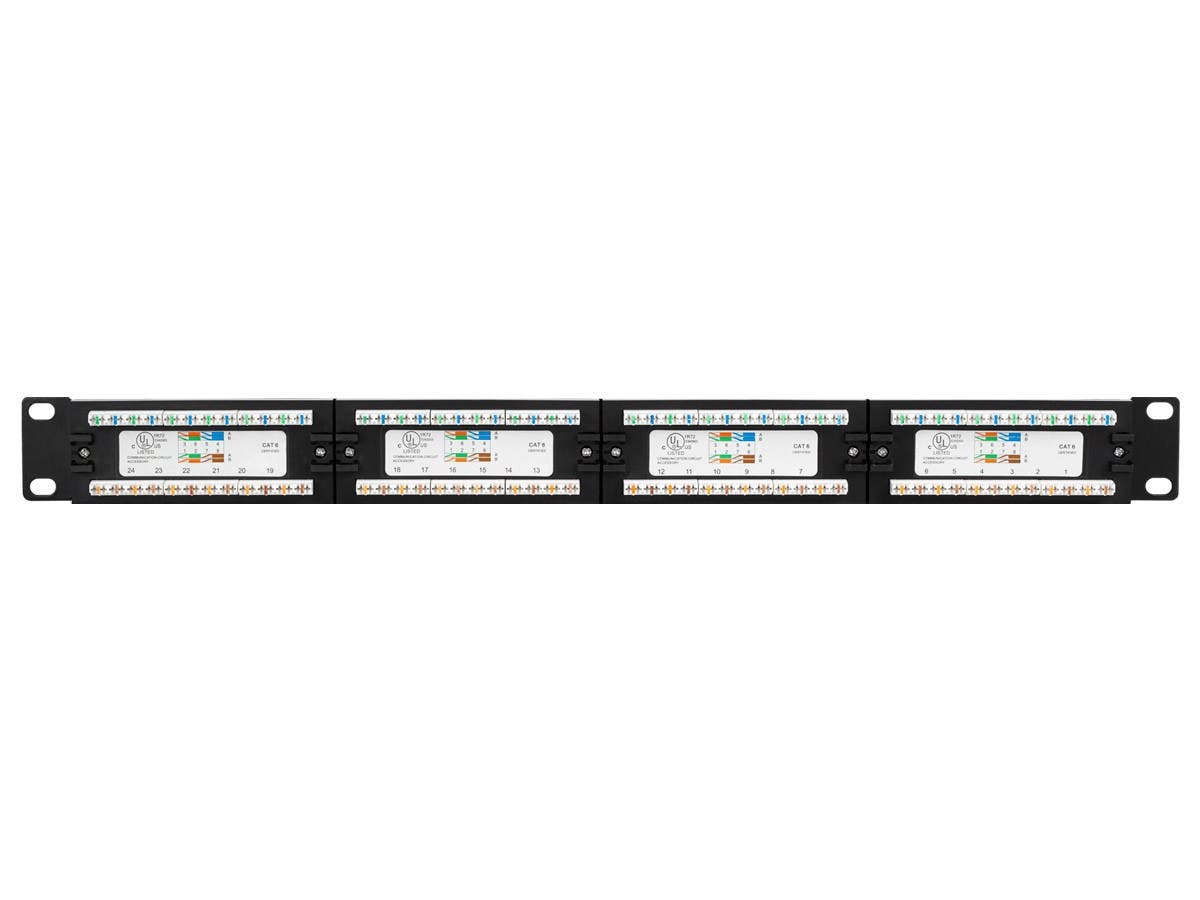Address
81 Spring Cove Rd. Swannanoa, NC 28778-3615Keystone vs Traditional Patch Panel
When installing new or additional structured cabling infrastructure to your IT network, you have to terminate your cables in the IDF or MDF. While it’s not unheard of to terminate them with modular plugs, structured cabling standards dictate that you land them on either a traditional or keystone patch panel.
Should You Choose a Traditional Patch Panel or Keystone Panel for Your Rack?
The choice for either one depends on performance, functionality, cost, and port density.
Performance. Keystone panels provide greater physical separation, which reduces the level of alien crosstalk (AXT). AXT refers to the signal interference from adjacent cables instead of normal crosstalk that measures the signal interference between pairs within the same cable. Both types of crosstalk levels increase with higher frequency signals.
Functionality. Keystone panels and modular jacks allow for greater ease for punch-downs and dressing cables into the rack during the initial installation and especially during adds to the system. If switches are present on the same rack as the cabling, it can be challenging to dress your new cables into traditional patch panels for termination when racks or routers are in the way. Cabling installed in closed network cabinets is even more difficult.
Density. You can find keystone patch panels in both low and high-density configurations. Depending on the manufacturer, 24 port panels are available for 1 RU, and there are 48 port panels 2 RUs. However, you can also find them in 12 and 16 port configurations for single RU panels.
Cost. Expect to pay a little more for a keystone patch panel if you use all of the existing ports. However, if you don’t need all of the ports, it may actually save you money. Without a doubt, it saves time in the future when someone needs to add more cables to the existing panel.
Bottom line. If you want the most cost-effective solution, consider using traditional panels for the initial installation up to the last patch panel. During the initial install, the panels are easy to access and dress in the cables. However, on the final panel, use a keystone since you’ll have to add to it in the future.



